Authors:
ABSTRACT
Aim
Anomalous maxillary median labial frenum may be associated with undesired effects such as persistence of diastema between anterior teeth or traction of marginal gingiva. The aim of this study was to propose a surgical frenum repositioning technique
that is minimally invasive, safe, easy, reproducible, and predictable. Another objective of the study was to identify clinical scenarios that could have indication for labial frenectomy associated with early orthodontic therapy, so as to justify early frenum repositioning in children. A retrospective assessment of clinical outcomes of this technique is described.
Methods
A total of 20
frenectomies were performed on children aged 8 to 10 years. Frenectomies were performed with Er:YAG laser set at 150mJ 2.25-3.0W and 15-20 pulse per second, with water spray. Recall visits were done at 7, 21 and 90 days and 1, 2, 3 and 4 years.
Results
At
post-operative visits, all patients reported no post-operative pain or minimal discomfort. None experienced post-operative bleeding at a distance of few hours. All patients reported that the procedure was well tolerated and “acceptable”. No recurrences occurred 4 years after frenectomy.
Conclusion
The Er:YAG laser used in this study allowed considerable reduction of the operating time, reducing
the amount of local anaesthetic used as well as avoiding surgical sutures. The surgical design and technique also minimised post-operative discomfort and complications resulting in stable healing overtime, making the procedure fully accepted by children.
PLUMX METRICS
Publication date:
Keywords:
Issue:
Vol.19 – n.1/2018
Page:
Publisher:
Cite:
Harvard: M. Olivi, M. D. Genovese, G. Olivi (2018) "Laser labial frenectomy: a simplified and predictable technique. Retrospective clinical study", European Journal of Paediatric Dentistry, 19(1), pp56-60. doi: 10.23804/ejpd.2018.19.01.10
Copyright (c) 2021 Ariesdue

This work is licensed under a Creative Commons Attribution-NonCommercial 4.0 International License.
